Another day, another verse of the Quran corroborated by empirical science. This time, the precise wording of the Quran has been reiterated (unknowingly) in the actual conclusion of the study.
The Take-Home Message
Looking at 195 countries between 1990 and 2016, this meta-analysis (the largest of its kind), part of the Global Burden of Disease 2016 series, published in the pre-eminent medical journal of the world, the Lancet, concluded the following:
…These findings emphasise that alcohol use, regardless of amount, leads to health loss across populations. Although we found some protective effects for ischaemic heart disease and diabetes among women, these effects were offset when overall health risks were considered—especially because of the strong association between alcohol consumption and the risk of cancer, injuries, and communicable disease. These findings stress the importance of assessing how alcohol use affects population health across the lifespan.
The Independent summarised the findings as follows:
Though previous research has shown moderate levels of drinking may protect against heart disease, the new study concluded any supposed boosts to health are massively offset by the costs.
This is, funnily enough, precisely the same argument deployed by the Holy Quran (2:220) 1400 years ago:
They ask thee concerning wine and the game of hazard (gambling). Say: ‘In both there is great sin and also some advantages for men; but their sin is greater than their advantage.’ And they ask thee what they should spend. Say: ‘What you can spare.’ Thus does Allah make His commandments clear to you that you may reflect.
It is a characteristic of the Quran that it acknowledges even the smallest benefit that may be present in a thing. This open, honest approach, has meant that Muslims have understood the reasoning behind the prohibition of alcohol in their religion, resulting in Muslims being the most abstinent of all religious communities for the past 1400 years.
The Findings
The findings of this Global Burden of Disease study will shock some and come as no surprise to others. They found that for 15-49 year olds, alcohol was the leading cause of death in men (12.2%) and women (3.8%) globally. These high mortality rates came as a result of increased likelihood of tuberculosis, road traffic accidents and self-harm. Among those older than 50 years of age, the and increased likelihood of cancer was the leading cause of death for both men (18.9%) and women (27.1%).
Finally, they found that the only level of alcohol at which these harms were minimised, below the level “moderate” alcohol consumption is thought to provide a benefit, was zero. In other words, there is no level of alcohol consumption that is good for you. They described this finding as follows:
In estimating the weighted relative risk curve, we found that consuming zero (95% UI 0·0–0·8) standard drinks daily minimised the overall risk of all health loss (see graph below). The risk rose monotonically with increasing amounts of daily drinking. This weighted relative risk curve took into account the protective effects of alcohol use associated with ischaemic heart disease and diabetes in females. However, these protective effects were offset by the risks associated with cancers, which increased monotonically with consumption.
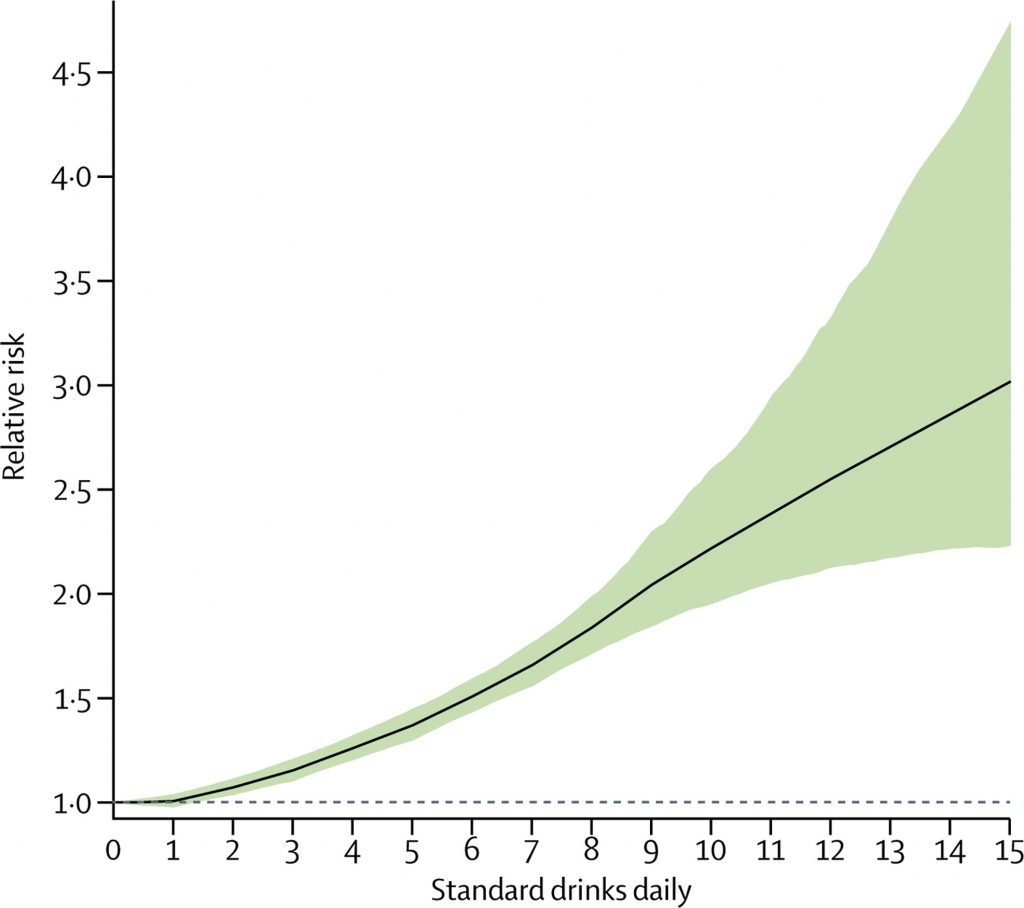
A breakdown of the relative risks for each disease burden is shown in the graphs below:
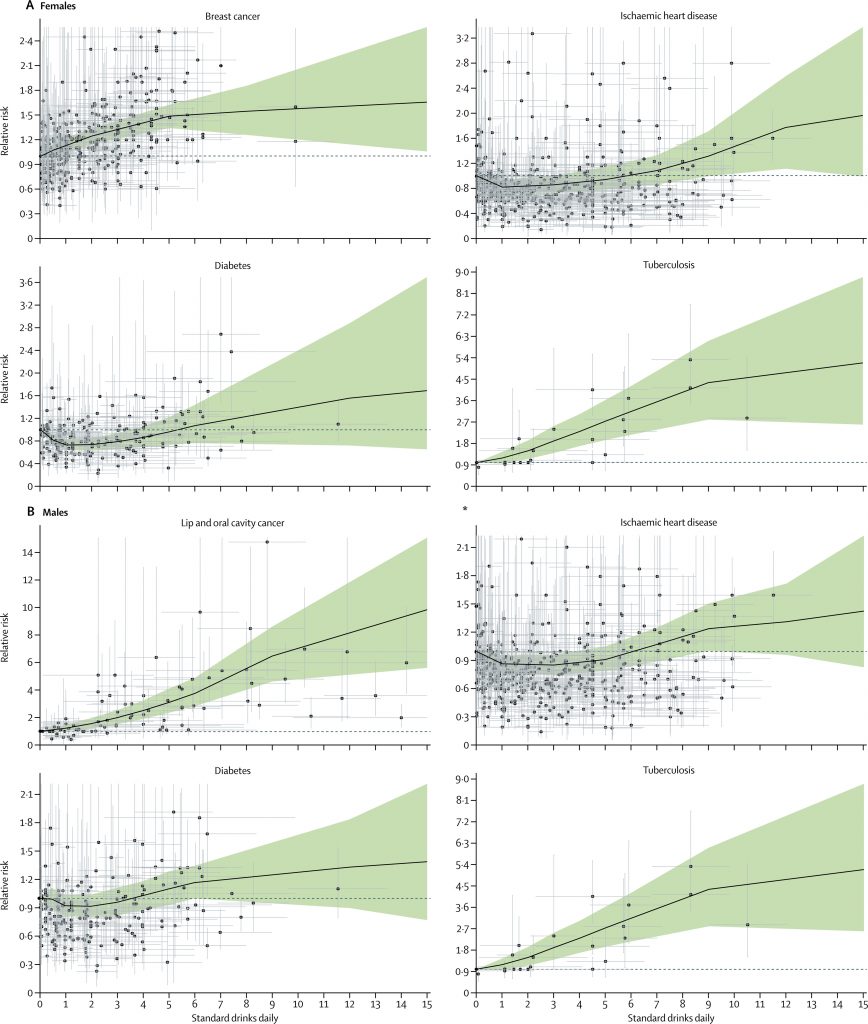
Conclusion
The Independent summarised the break-down of drink-by-drink findings as follows:
They estimated that one drink a day increases the risk of developing an alcohol-related diseases including cancer, diabetes and tuberculosis by 0.5 per cent. This shot up to 7 per cent for those having two drinks a day, and 37 per cent for five drinks.
Only recently we covered how modern science has recently corroborated the very specific statement of the Quran, that undersea mountains decrease the effects of earthquakes for us on the surface. Now we are seeing another Quranic pronouncement finding fulfilment in the most stark manner, with a literal re-wording of the Quranic reasoning in the largest meta-analysis ever conducted on alcohol.
These signs serve us stark signs of the truth of the Holy Quran, but in the Quranic idiom, only for those who have ears to hear.
Have they not travelled in the land, so that they may have hearts wherewith to understand, or ears wherewith to hear? But the fact is that it is not the eyes that are blind, but it is the hearts which are in the breasts that are blind.
Quran 22:47
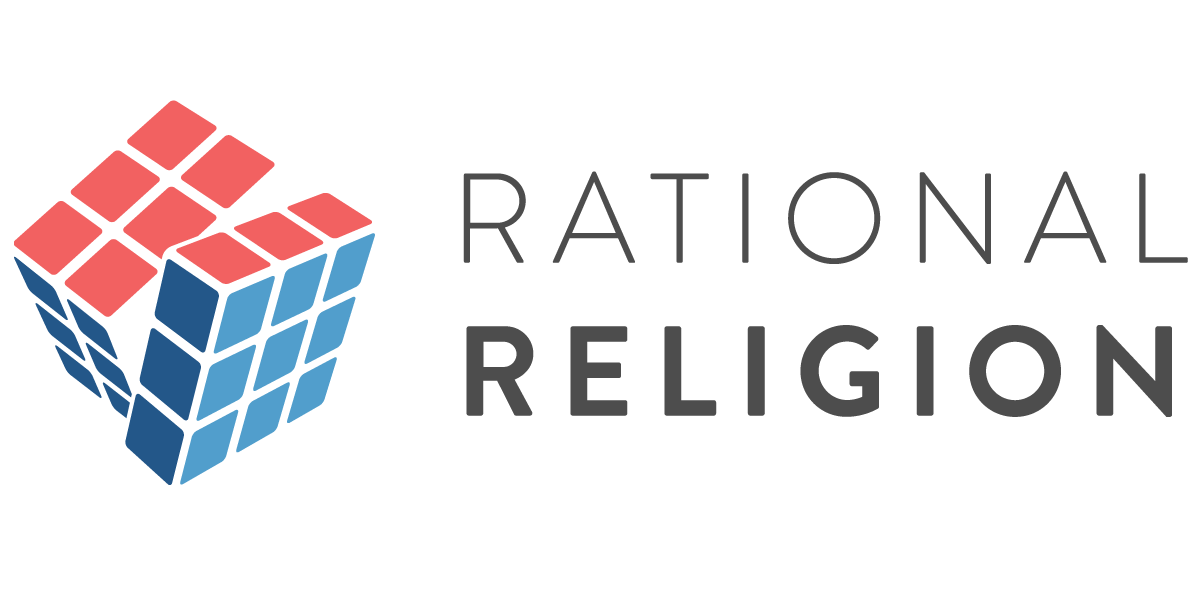
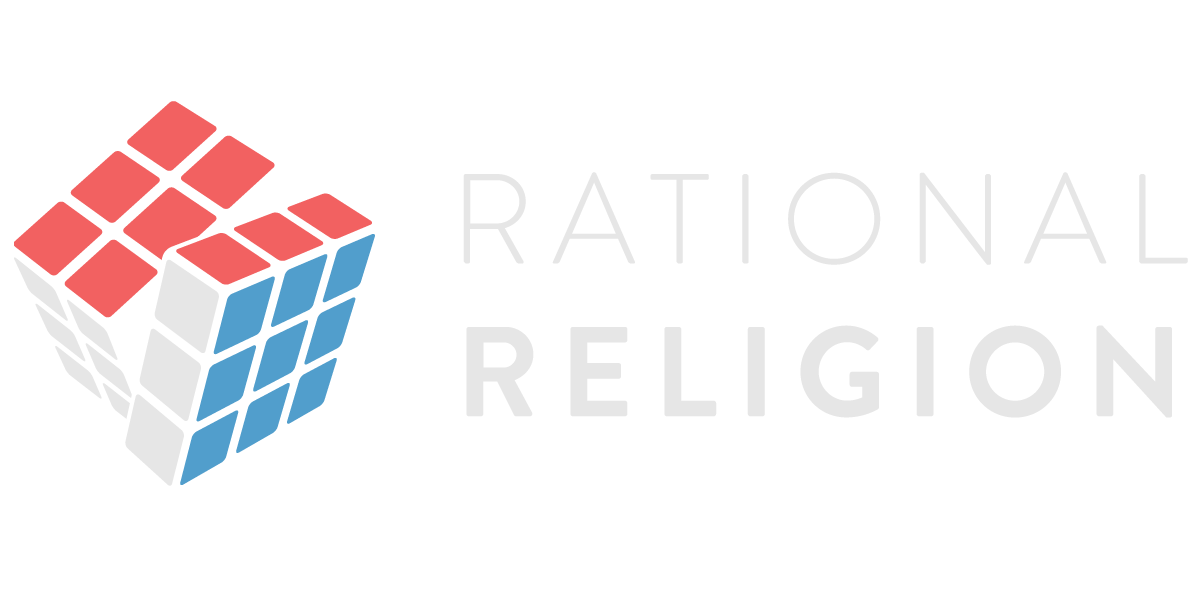






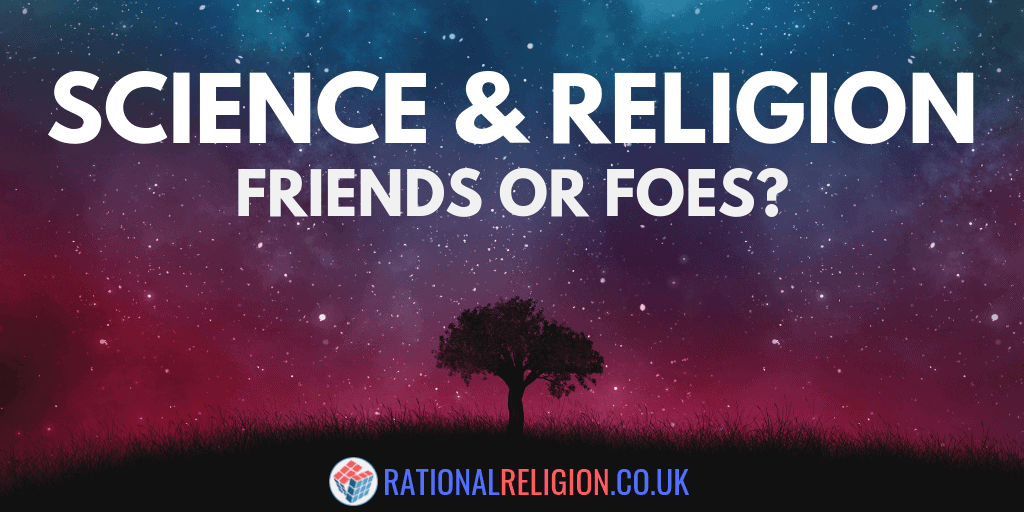
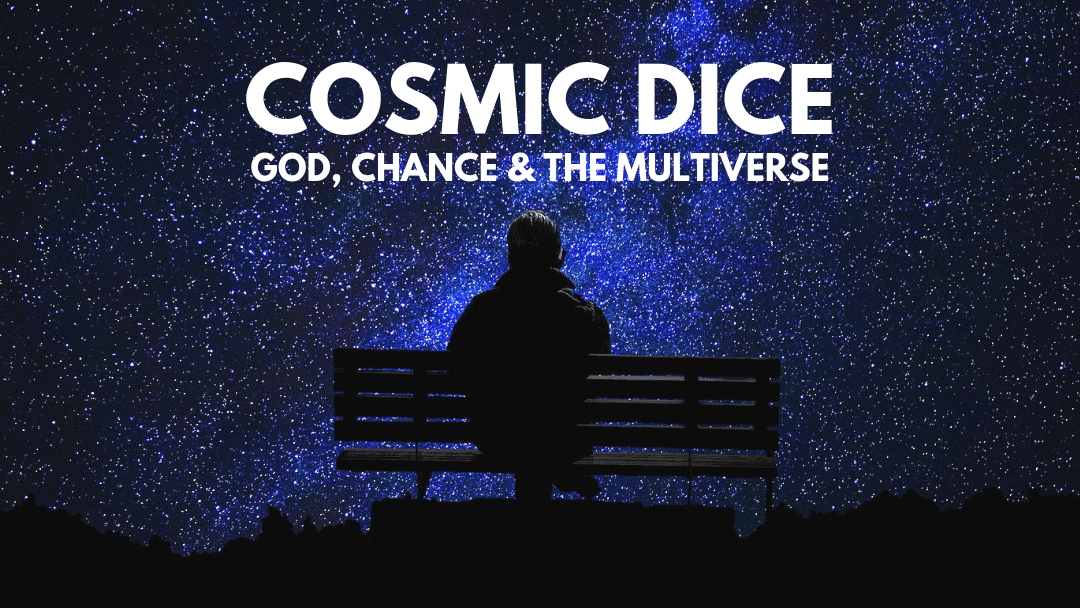
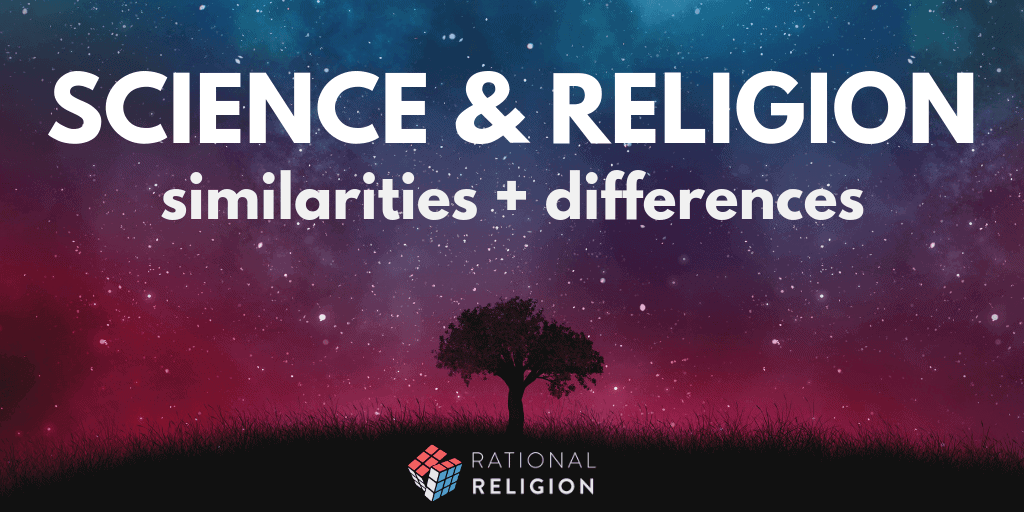
Subhanallah.
Another interesting meta analysis was published recently, suggesting alcohol continues to impair the cognitive abilities of the drinker longer than most think, after the alcohol has left the blood stream, sometimes taking more than a day for the brain to return to normal functioning. Noticing more and more studies into the effects of alcohol lately, hopefully these will all work to strengthen Quranic argument against alcohol.
Great article!